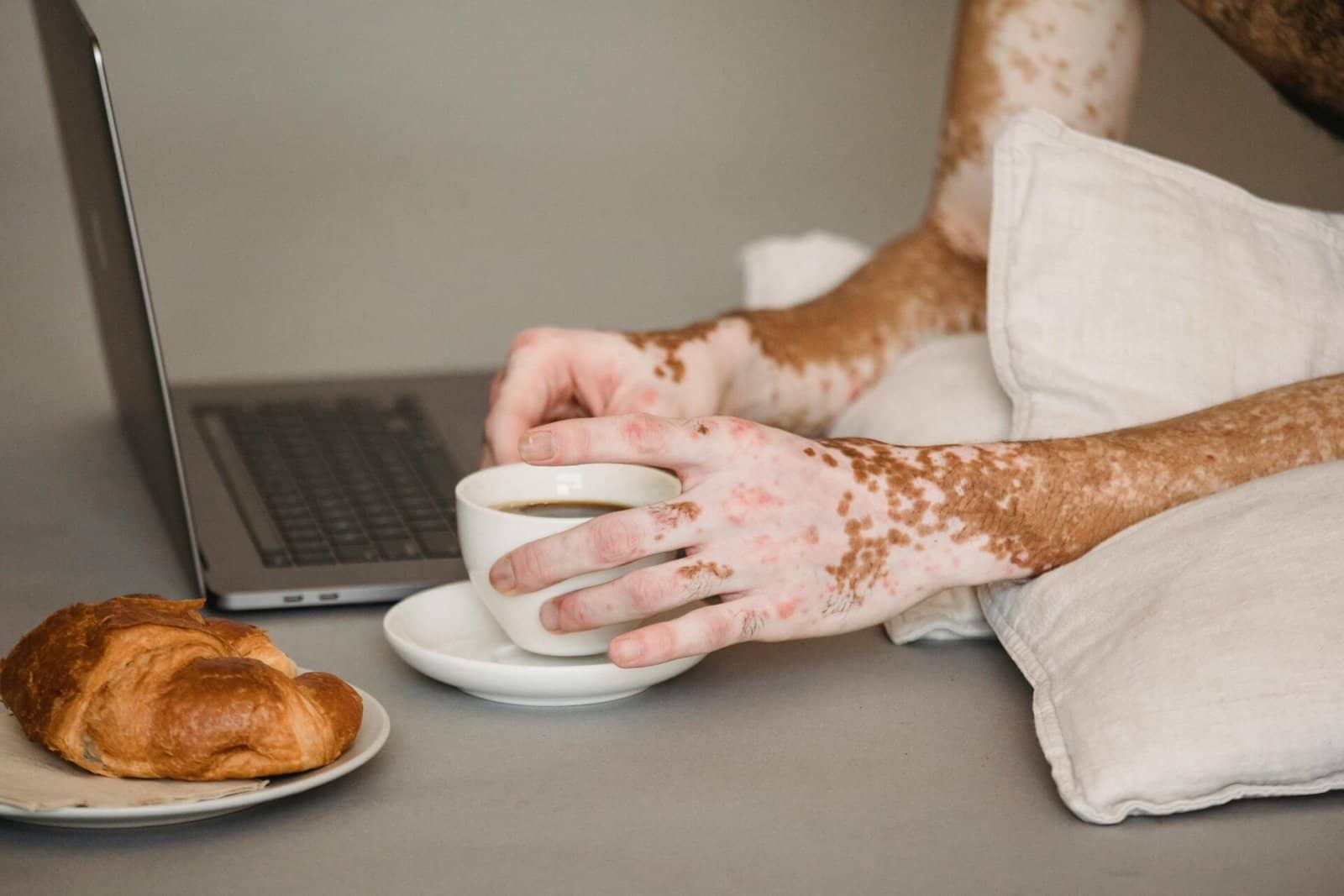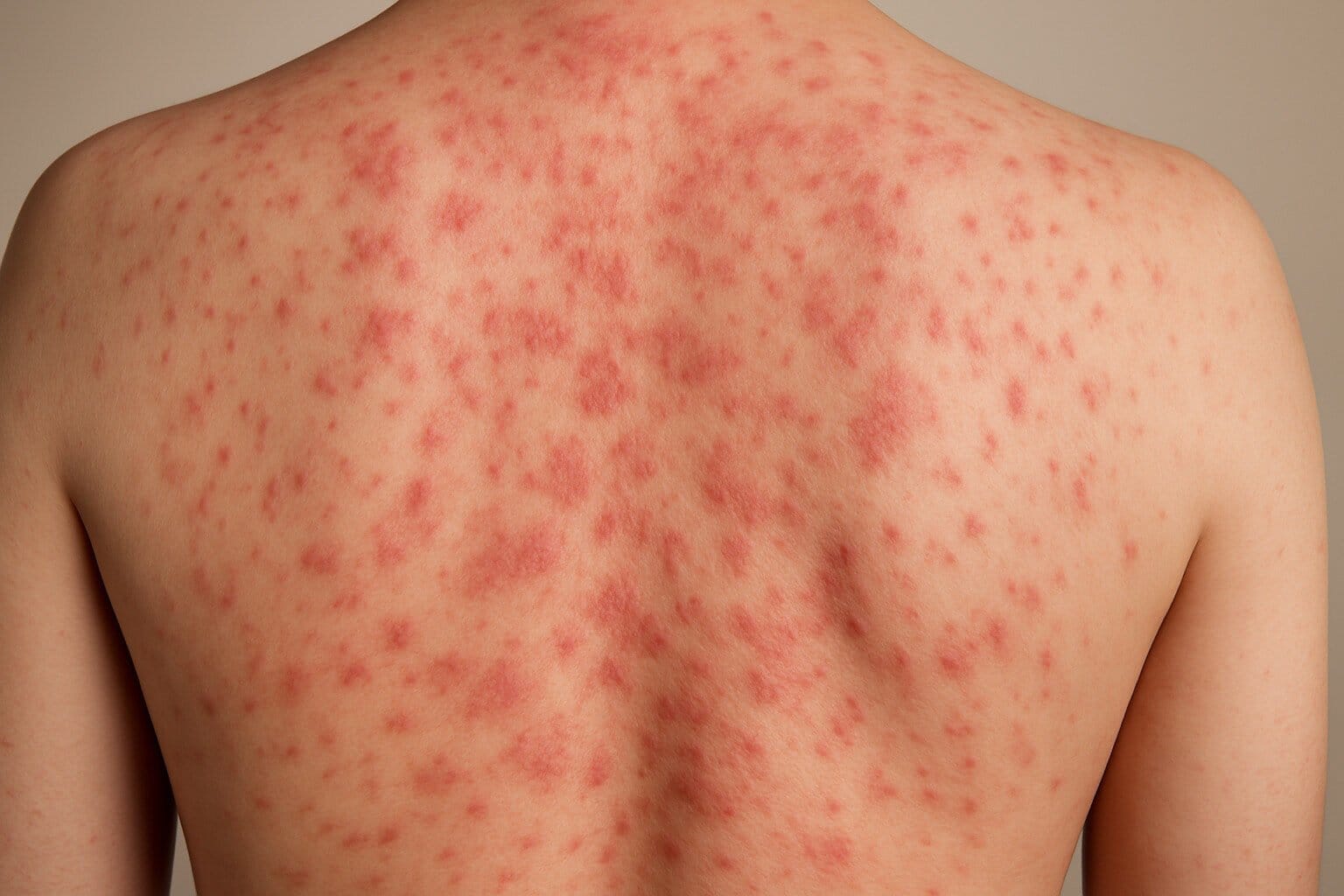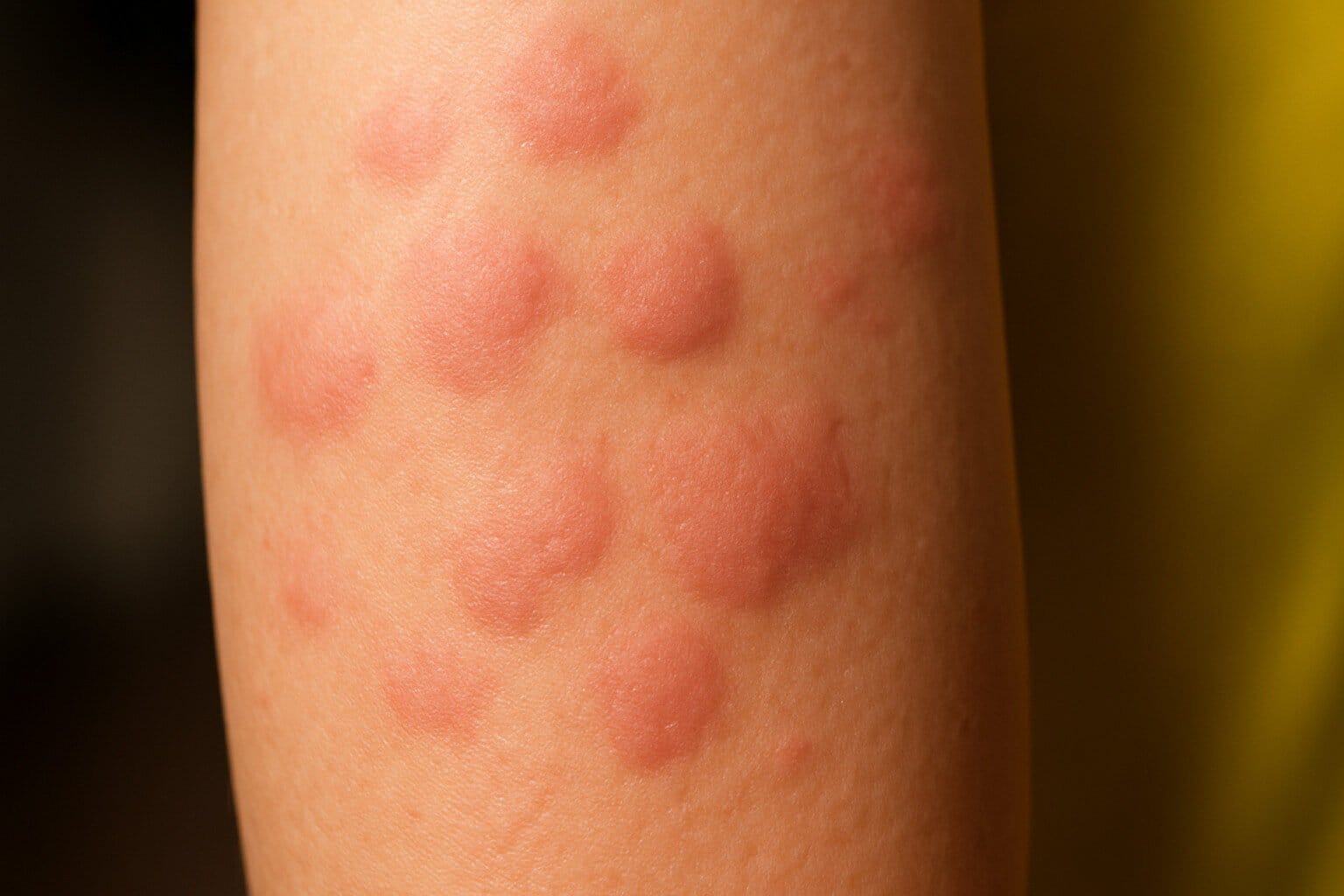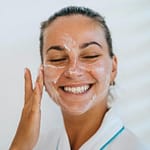Why Pustules Spread Quickly? A Quick Read
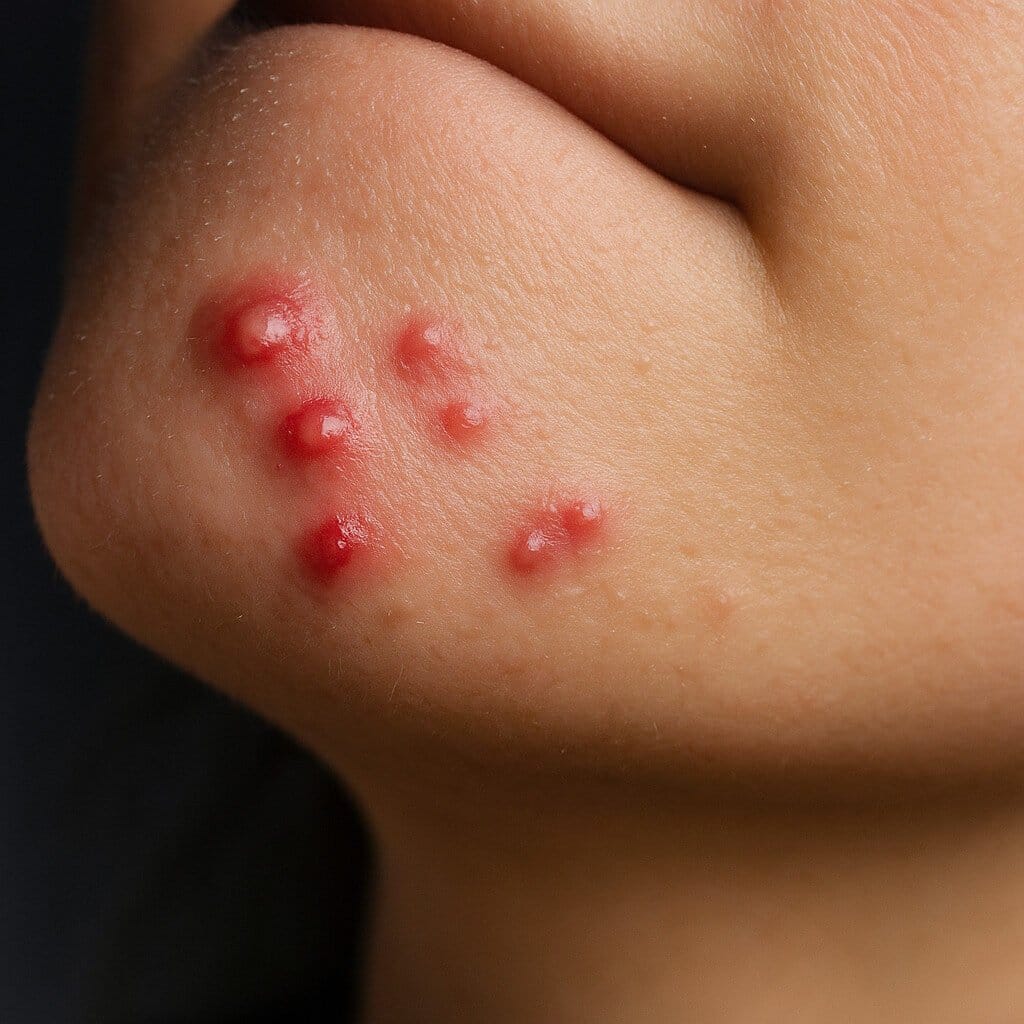
- What are Papules?
- Why do they happen?
- How do they spread?
- Types
- Myths
- Solutions
- Preventions
- Recommendation
- FAQs
Pustules are small, pus-filled bumps that pop up on your skin. For example, they can appear before a big day, like a school play, a birthday party, or a class photo. These acne bumps look red, feel sore, and have a white or yellow top. Moreover, they make your skin look bumpy and can spread fast, which is super annoying, especially when you want to look your best. Pustules aren’t dangerous, but they can make you feel shy about your face.
However, the good news is you don’t need expensive products or a doctor to fix them. You can treat pustules at home with easy tricks. This article explains why pustules happen and why they spread so quickly. Additionally, it covers how they form, different types, myths to avoid, and simple ways to treat and stop them. Furthermore, we include tips and answer questions to help you get clear, smooth skin. Therefore, this guide will help you feel confident and keep pustules away for good.
What Are Pustules?
Pustules are tiny, raised bumps with a white or yellow pus-filled top. Unlike blackheads, they’re sore and red around the edges. For instance, they show up on your face, like your cheeks or chin, or on your back or chest. They’re a type of acne that feels tender when you touch them. Moreover, anyone can get pustules, not just kids your age. Things like stress, oily skin, or not washing your face can cause them. For example, they often appear in oily spots, like your nose or forehead. However, they can pop up anywhere, even on your shoulders. By learning what makes pustules and how they spread, you can stop them. Therefore, this guide gives you tools to fight pustules, whether you have one bump or a bunch, so your skin looks great.
Why Do They Happen?
Pustules form when your skin’s pores, which are tiny holes, get clogged and inflamed. Your skin makes oil, called sebum, to stay soft and smooth. However, sometimes it makes too much oil. For example, this happens during puberty, when you’re stressed about a test, or during periods for girls. The oil mixes with dead skin cells that don’t fall off like they should. As a result, this clogs the pore. Then, bacteria, like Propionibacterium acnes, grow in the pore, causing swelling and pus. This makes a pustule. Unlike blackheads, which are open and dark, or whiteheads, which are closed and white, pustules have pus and redness.
Additionally, hormones make your skin oilier, especially when you’re a teen or worried about school or friends. If your parents had acne, you might get pustules too, because it runs in families. For instance, thick makeup, not washing your face after sports, or wearing tight clothes can add oil and dirt. Some medicines, like for colds or allergies, make more oil. Moreover, eating lots of dairy, like milk or ice cream, or sugary snacks, like candy or soda, might cause pustules for some kids. Sweating a lot, like after soccer practice, or wearing a tight hat can trap dirt. Therefore, knowing these causes helps you stop pustules before they spread across your skin.
How Do They Spread?
Pustules spread quickly because bacteria and oil move to nearby pores. Your skin has tons of pores close together. When a pustule forms, bacteria can escape from the inflamed pore. For example, touching or popping a pustule pushes germs to other pores. This causes new pustules to pop up nearby. Additionally, excess oil from one pore can clog others, spreading the problem faster. Sweat or dirt from unwashed hands makes it worse, especially after playing outside.
Moreover, things like oily lotions, dirty pillowcases, or sweaty clothes add more germs and oil. For instance, sleeping on a pillowcase you haven’t washed since last week can spread bacteria. Hormones or stress keep your skin oily, helping pustules form faster. Then, if you don’t clean your skin, the cycle keeps going. For example, not washing after gym class lets sweat and oil build up. This process, bacteria, oil, and irritation, makes pustules spread. Therefore, knowing this helps you stop them by keeping your skin clean and avoiding things that make it worse.
Types
Pustules are a type of acne, but other bumps look similar. Here are the main kinds to know:
- Pustules: Small, red bumps with a white or yellow pus-filled top. They form when clogged pores get inflamed. For example, they appear on your face, back, or chest.
- Papules: Like pustules but without a pus-filled top. They’re red, sore, and smaller. For instance, they show up during mild acne breakouts on your forehead.
- Nodules: Bigger, deeper, harder bumps under the skin. They’re more serious and very sore. Moreover, they often need a doctor’s help to go away.
Each type needs different care. Pustules can be treated at home with simple tricks. However, papules are less swollen, and nodules need extra help. Therefore, knowing your bump type helps you treat it the right way so your skin stays healthy.
Myths
Wrong ideas about pustules can confuse you. Therefore, let’s clear up some common myths to set things straight:
- Myth 1: Pustules come from dirty skin. Nope! Oil, skin cells, and germs cause them. However, not washing your face makes them worse by adding dirt.
- Myth 2: Popping pustules makes them go away fast. Wrong! Popping spreads germs, causing more pustules or even scars on your face.
- Myth 3: Only teens get pustules. Not true! Teens get them a lot because of hormones, but adults can too. For example, stress causes them in grown-ups.
- Myth 4: Toothpaste gets rid of pustules. No way! Toothpaste irritates your skin and makes pustules worse. Instead, use products made for your face.
- Myth 5: Food doesn’t cause pustules. Actually, dairy, like milk or cheese, or sugary snacks, like cookies, can make your skin oilier for some kids, leading to pustules.
Thus, fixing these myths helps you focus on real ways to stop pustules instead of trying things that don’t work or hurt your skin.
Solutions
You can treat pustules at home with easy tricks to calm your skin and clean your pores. Try these ideas to get started:
- Gentle Washing: Wash your face twice daily, morning and night. Use a gentle, oil-free soap labeled “non-comedogenic.” For example, it won’t clog pores. This cleans oil and dirt without hurting your skin, like after a day of playing outside.
- Spot Treatments: Use a cream with benzoyl peroxide or salicylic acid. Dab a tiny bit on pustules once daily. These fight germs and unclog pores. However, don’t use too much, it can dry your skin and make it flaky.
- Natural Fixes: Try these home remedies to help:
- Tea Tree Oil: Mix 2-3 drops with a tablespoon of water. Dab on pustules with a cotton ball. It fights germs and calms redness. Always mix with water to avoid irritation.
- Aloe Vera Gel: Put fresh aloe vera on pustules before bed. It reduces redness and helps your skin heal while you sleep, like a soothing bandage.
- Green Tea Rinse: Brew green tea, let it cool. Dab it on with a cotton pad. It calms swelling and makes pustules less red and sore.
Do these regularly. For instance, you might see pustules get better in a week or two with consistent care.
Preventions
Stopping pustules means keeping your pores clean and your skin calm. Here are some tips to keep them away:
- Light Moisturizer: Use a light, non-comedogenic moisturizer, even if your skin is oily. This stops dryness, which can make your skin produce more oil and cause pustules.
- Avoid Triggers: Skip thick makeup or greasy lotions, they clog pores. For example, wash makeup brushes every week. Change pillowcases every few days to stop oil buildup. Wash your face after sweating, like after gym class or biking.
- Sun Protection: Put on a non-oily SPF 30 sunscreen every day. Sun can hurt your skin and clog pores. Choose zinc oxide sunscreen if your skin is sensitive to avoid irritation.
- Eat and Drink Healthy: Drink lots of water to keep your skin hydrated. Eat fruits, veggies, and whole grains, like apples, carrots, or oatmeal. Cut back on dairy, like milk or ice cream, and sugary snacks, like candy or soda, which can make your skin oilier for some kids.
- Handle Stress: Stress makes your skin oilier, so try relaxing stuff, like deep breathing, drawing, or listening to music. Sleep 8 hours a night to help your skin stay healthy and avoid pustules.
Keep doing these tips every day. If pustules don’t go away after a month or two or get really bad, ask a parent to help you see a skin doctor for extra help.
Recommendation
To beat pustules at home, start with an easy, daily plan that’s simple to follow. First, wash your face every morning and night with a gentle, oil-free soap that says “non-comedogenic.” This cleans away dirt and oil without clogging pores. Then, dab a tiny bit of benzoyl peroxide or salicylic acid cream on pustules once a day to reduce swelling and clear pores. Additionally, try natural fixes, like tea tree oil mixed with water or aloe vera gel, 2-3 times a week to calm your skin and make pustules less red. After washing, use a light, non-comedogenic moisturizer to keep your skin soft. Also, put on SPF 30 sunscreen during the day to protect your skin from the sun.
Next, write down what might cause your pustules in a notebook or phone app, like drinking milk, using heavy makeup, or sweating a lot after sports. Avoid those things when you can. For example, wash your pillowcase and makeup brushes every week to stop oil and dirt buildup. Don’t touch your face with dirty hands, like after playing outside or eating snacks. Moreover, eat healthy foods, like fruits, veggies, and water, and try to cut back on sugary snacks or dairy, which can make your skin oilier. Furthermore, relax with fun activities, like listening to music, stretching, or even coloring, because stress can make pustules worse. Get 8 hours of sleep every night to help your skin heal. Be patient, pustules usually take a week or two to get better, but they can take longer if they’re stubborn. However, if you don’t see a change after a month or if your skin gets worse, like with big, sore bumps, ask a parent to help you talk to a skin doctor for advice.
FAQs
Q: Do pustules go away on their own?
A: Some fade in a week or two. However, washing and treating your skin helps them go away faster and stops new ones.
Q: Can I pop pustules?
A: No, popping spreads germs to other pores. As a result, it causes more pustules or scars. Instead, use tea tree oil or aloe vera.
Q: Does food cause pustules?
A: Yes, dairy, like milk, or sugary snacks, like candy, can make your skin oilier for some kids. Therefore, try eating healthier foods.
Q: Are pustules like papules?
A: No, pustules have a pus-filled top and are more swollen. Papules are red with no top and less sore.
Q: How long does it take to clear pustules at home?
A: With a good routine, you might see results in 1-2 weeks. However, tough pustules can take 4-6 weeks to fully clear.
Q: Can sunscreen cause pustules?
A: Greasy sunscreens might clog pores. Therefore, use a non-oily SPF 30 that says “non-comedogenic” to keep your skin safe.
Q: Can regular soap clean pustules?
A: No, regular soap can dry your skin too much, making more oil. Instead, use a gentle, non-comedogenic face soap for better results.
Q: Are pustules the same as nodules?
A: No, pustules are small with a pus-filled top. Nodules are deeper, harder, and often need a doctor’s help to treat.
By learning why pustules spread so fast and using these simple home fixes and tips, you can keep your pores clean and get smoother, healthier skin. Stick with your routine, avoid things that cause pustules, and be patient, your skin will look awesome and make you feel great!
Subscribe to our newsletter!
